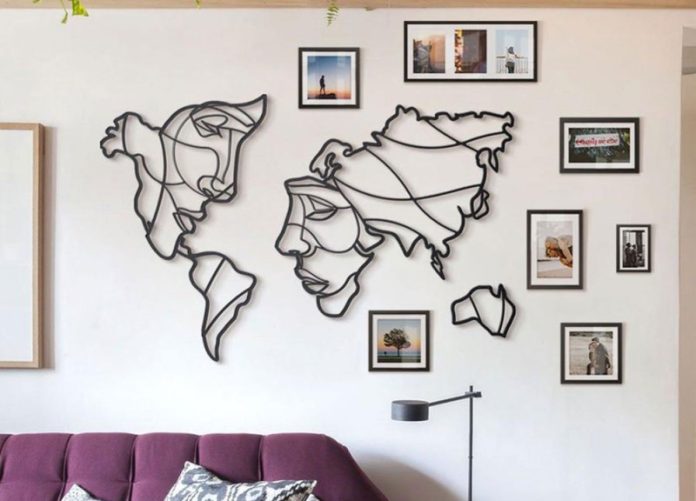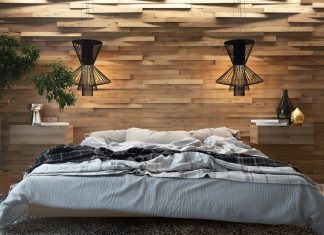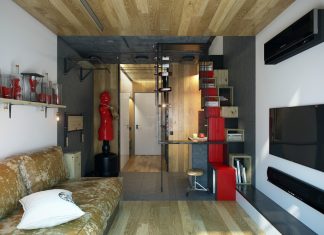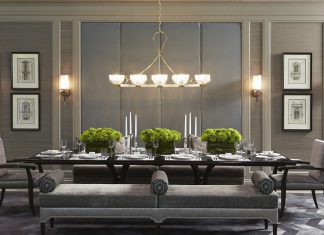If you are instantly inspired when you encounter some stunning metal wall art, you are not alone as there are an infinite number of themes, forms, sizes, as well as designs that are available online and in-store. On the flip side, all of this variety might make your mind spin, and you may find yourself thinking whether the metal wall art you’re about to purchase is gaudy.
Regardless of whether metal wall art is considered tacky relies on a variety of criteria, including how well it is coordinated with the accompanying décor, the appropriate size, and the consistency of style or pattern. Choosing potentially gaudy metal art may also be a reflection of an individual’s own taste, education, and interest in the arts.
For millennia, humans have taken great pleasure in adorning the walls of their homes. To this day, thousands of years of cave paintings including Egyptian hieroglyphs may be viewed.
Regardless of the fact that wall decorations were formerly utilized for purposes other than aesthetics, many experts believe the paintings were intended to tell a narrative and express a message. Other hypotheses asserted that they existed just to facilitate a ceremony.
Wall décor in the current era is just decorative, with no underlying message or purpose. Metal makes up a sizable portion of this kind of wall art.
Before we get into the details of what metal wall art is, whether it’s tacky, and why you should opt to place it on your walls, it’s necessary to understand why the art is tacky.
When is Art Considered to be Tacky?
Tacky art is a frequent occurrence at upscale shopping malls, hotels, gift shops, duty-free airport arcades, and casinos because it is supposed to appeal to uncultivated or mainstream taste owing to its exaggerated sentimentality or gaudiness.
Tacky art is seen as false, ill-advised, and lacking in elegance. While many of us appreciate the artworks for their hilarious design, others maintain that they are unattractive and tasteless. Often referred to as “kitsch,” this style of art implies that the item is just ornamental and bears no aesthetic quality.
The world is flooded with low-cost items these days as a result of mass manufacturing, capitalism, as well as the industrial revolution. This is exacerbated further by a general lack of interest in the fine arts.
The barrier between fine art and kitsch (or tacky art) has gotten more blurred in recent years, with a tiny line separating these two styles. To correctly differentiate excellent art from kitsch, one must be astute and informed. However, if you enjoy this style of artwork, there is nothing preventing you from purchasing it.
Is Using a Metal Wall Art Tacky?
Adorning walls with tastefully chosen metal embellishments is an excellent approach to infuse a room with vitality. Nevertheless, this must be accomplished in an elegant manner. The art will then become captivating and awe-inspiring for anybody entering the space.
Metal art, like all types of décor, can be regarded as tacky depending on how it contrasts with its surroundings. Walls may quickly become congested with an excessive number of metal art objects. Using them to plaster all of your walls will not produce the finest visual result. The original art piece’s distinctiveness will begin to wane. Using the same type of décor repeatedly in the same space will detract from the room’s overall appearance. In this context, little is more.
Maintain a consistent style or concept across the room. Too much variation in décor may be perplexing and unappealing. For instance, metal wall art that includes text or inspirational and encouraging quotations would seem out of place if you have a number of other wall art that clash.
So, if ever you are hanging a scripture passage, or a neon sign, or a death metal print, a framed movie poster, a unicorn photograph, and an antique cuckoo clock in the same room, everything will seem out of place which results in any of the decorations function in conjunction with one another.
At times, we may be tempted to go overboard with our décor, which violates the standards of good taste, so with all of this in mind, your metal wall art will undoubtedly seem tacky.
Why Is It Necessary to Integrate Metal Wall Art and How Can It Be Done?
Overall, an art gets tacky when it loses its distinctiveness and is lined throughout the interior with identical pieces because each wall in a room has a unique location for art to be mounted and this might vary depending on the type of furnishings in the space.
For example, if a sofa is put in front of a wall, the bulk of the artwork will appear best when it is centered over the couch and almost equal in height to the ceiling. Placing it too high frequently generates visual imbalances and makes the sofa appear too tiny. On the other hand, hanging it too low creates the illusion that the room is encircling.
Size is another critical thing to consider when combining metal wall art. You must match the size of your wall art to the size of the wall. Select little things for small walls and larger items for larger walls. As a result, if you put a work of art on an insufficiently large wall, it is instantly evident. Additionally, the same holds true for components that are overly large. The artwork affixed to a piece of furniture should not exceed the breadth of the piece of furniture.
As a general guideline, wall art should fully occupy the room’s area and not leave it unadorned. If the wall art is modest, try pairing it with other pieces to create a cohesive composition. Metal wall art may serve as the framework for decorating and customizing a room. By combining various metals, you can still make metal wall artwork for you and give a touch of class and beauty to your house.
When you match stunning metal wall art with a mirror, the mirror will do more than reflect the art. However, it will also give the space a much bigger and more open sense. A mirror is an ideal complement to metal art, even more so when it incorporates a metal frame!















